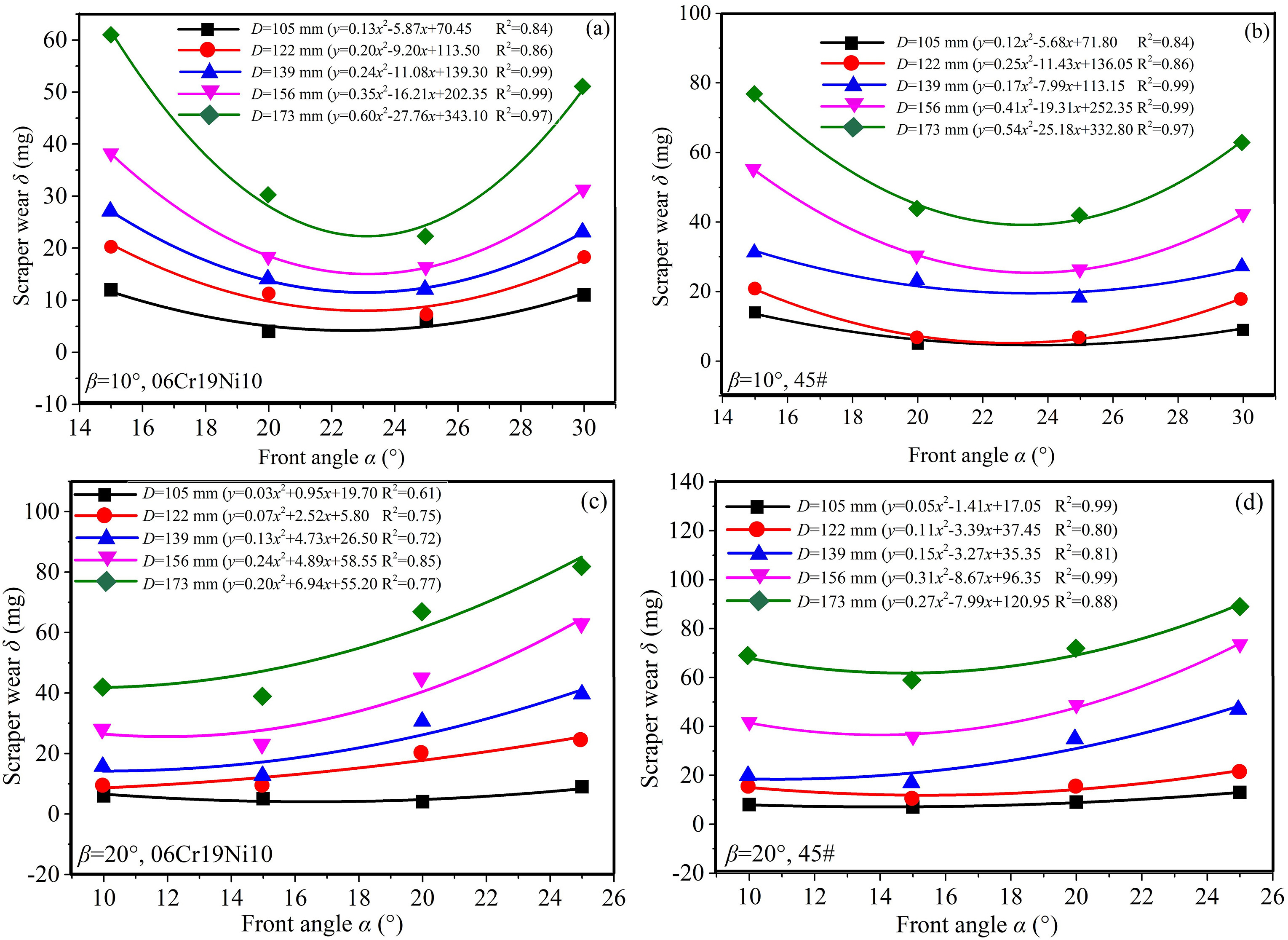JRMGE / Vol 16 / Issue 2
Experimental study on the influences of cutter geometry and material on scraper wear during shield TBM tunnelling in abrasive sandy ground
Shaohui Tang, Xiaoping Zhang, Quansheng Liu, Qi Zhang, Xinfang Li, Haojie Wang
Show More
a Key Laboratory of Safety for Geotechnical and Structural Engineering of Hubei Province, School of Civil Engineering, Wuhan University, Wuhan, 430072, China
b State Key Laboratory of Water Resources and Hydropower Engineering Science, Wuhan University, Wuhan, 430072, China
2024, 16(2): 410-425. doi:10.1016/j.jrmge.2023.10.009
Received: 2022-12-26 / Revised: 2023-09-07 / Accepted: 2023-10-19 / Available online: 2023-12-28
2024, 16(2): 410-425.
doi:10.1016/j.jrmge.2023.10.009
Received: 2022-12-26
Revised: 2023-09-07
Accepted: 2023-10-19
Available online: 2023-12-28
When shield TBM tunnelling in abrasive sandy ground, the rational design of cutter parameters is critical to reduce tool wear and improve tunnelling efficiency. However, the influence mechanism of cutter parameters on scraper wear remains unclear due to the lack of a reliable test method. Geometry and material optimisation are often based on subjective experience, which is unfavourable for improving scraper geological adaptability. In the present study, the newly developed WHU-SAT soil abrasion test was used to evaluate the variation in scraper wear with cutter geometry, material and hardness. The influence mechanism of cutter parameters on scraper wear has been revealed according to the scratch characteristics of the scraper surface. Cutter geometry and material parameters have been optimised to reduce scraper wear. The results indicate that the variation in scraper wear with cutter geometry is related to the cutting resistance, frictional resistance and stress distribution. An appropriate increase in the front angle (or back angle) reduces the cutting resistance (or frictional resistance), while an excessive increase in the front angle (or back angle) reduces the edge angle and causes stress concentration. The optimal front angle, back angle and edge angle for quartz sand samples are α = 25°, β = 10° and γ = 55°, respectively. The wear resistance of the modelled scrapers made of different metal materials is related to the chemical elements and microstructure. The wear resistances of the modelled scrapers made of 45#, 06Cr19Ni10, 42CrMo4 and 40CrNiMoA are 0.569, 0.661, 0.691 and 0.728 times those made of WC-Co, respectively. When the alloy hardness is less than 47 HRC (or greater than 58 HRC), scraper wear decreases slowly with increasing alloy hardness as the scratch depth of the particle asperity on the metal surface stabilizes at a high (or low) level. However, when the alloy hardness is between 47 HRC and 58 HRC, scraper wear decreases rapidly with increasing alloy hardness as the scratch depth transitions from high to low levels. The sensitive hardness interval and recommended hardness interval for quartz sand are [47, 58] and [58, 62], respectively. The present study provides a reference for optimising scraper parameters and improving cutterhead adaptability in abrasive sandy ground tunnelling.
Keywords: Shield TBM, Scraper wear, Cutter shape, Metal material, Alloy hardness
Show Figure(s)
Share and Cite
Shaohui Tang, Xiaoping Zhang, Quansheng Liu, Qi Zhang, Xinfang Li, Haojie Wang, 2024. Experimental study on the influences of cutter geometry and material on scraper wear during shield TBM tunnelling in abrasive sandy ground. J. Rock Mech. Geotech. Eng. 16 (2), 410-425.
Article Data
Author(s) Information
Shaohui Tang

Dr. Shaohui Tang is a postdoctor at Wuhan University, China. He is the winner of the first prize of the Hubei Province Science and Technology Progress Award. His research interest includes shield tunnelling control, cutter wear evaluation and excavation volume calculation. Until now, Dr. Tang has presided over several projects funded by the National Natural Science Foundation of Youth Fund of China, the Fellowship of China Postdoctoral Science Foundation and the China postdoctoral Science Foundation on the 74th grant program. He has published 15 SCI papers.

